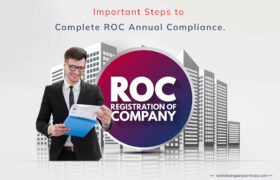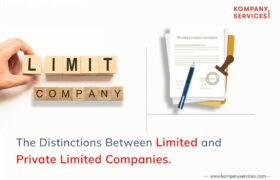India offers several business structures for entrepreneurs to choose from, each with its unique characteristics and advantages. Here are the common types of business structures in India:
Proprietorship Firm
A proprietorship firm can be established and managed by a single person. Only one person runs the business, and it is ideal for small business owners with low investments. The sole owner will have complete authority over the company, and while they will have access to all of the company’s income, they will also be responsible for bearing all of the company’s losses.
Partnership Firm
When more than one individual decides to work together in business, they are said to have formed a partnership. The profits that are made by the company are distributed among the partners of the firm in an equal manner. They are also going to be responsible for bearing the firm’s losses. The partnership firm is regulated under the Partnership Act, 1932. It is perfect for small firms that have a low initial investment and are handled by two or more people.
One-Person company
If there is just going to be one promoter or owner of the firm, starting it off with an one person company, which only became available in 2013, is the most effective way to do it. It makes it possible for a solo owner to continue his work while also becoming a part of the corporate structure. The Companies Act of 2013 has granted it registration as a company. It is ideal for small businesses who want to raise capital.
Limited Liability Partnership (LLP)
The responsibilities of participants in a limited liability partnership (LLP), which is a separate legal entity, are restricted to the amount that they have agreed to contribute. An LLP is established under the Limited Liability Act, 2008 with the Registrar of Companies (ROC). It possesses characteristics that are shared by both partnership firms and corporations. It is an excellent choice for businesses that are started by partners who seek limited liability and fits that description perfectly.
Private Limited Company
In the eyes of the law, a public limited company (PLC) is treated as an independent legal entity from its founders. The company’s directors are in charge of managing the business operations of the company. The investors in the company are known as shareholders, and they have a stake in the business. A PLC is registered under the Companies Act, 2013 with the ROC. It is an excellent choice for companies of a medium to large size who need to raise funds.
Public Limited Company
In accordance with the Companies Act of 2013, a company is considered to be a Public Limited Company if it has seven members or more. The board of directors is in charge of managing the company’s day-to-day operations. It has its own independent legal existence, and the members’ responsibility is restricted to the amount of shares they own in the company. It is ideal for medium to big businesses who wish to raise capital from the public.
You can choose the business structure that suits your business needs and accordingly register your business.
Why is it important to choose the right business structure?
Because of its impact on your income tax returns, it is critical to give careful consideration to the organisational structure of your company. When you are registering your company, it is important to keep in mind that different types of business structures have varying degrees of compliance requirements that must be satisfied. For instance, a sole owner is required to file only one form of tax return each year. However, a corporation is required to submit an income tax return in addition to the annual filings that are required to be filed with the Registrar of Companies.
Choosing the proper enterprise structure is critical for numerous motives:
- Tax Implications: Different structures have various tax implications, which include income tax, employer tax, and capital gains tax. Understanding those implications facilitates in planning and minimizing tax liabilities.
- Liability Protection: Some systems, like groups and confined liability corporations (LLCs), offer legal responsibility safety for the owners. This protection shields private property from commercial enterprise money owed and legal responsibilities.
- Financing and Capital: The shape chosen can effect the potential to elevate capital and attract investors. For instance, agencies are more attractive to investors because of their liability protection and potential to difficulty stocks.
- Administrative Complexity: Different systems have various ranges of administrative complexity, which include compliance requirements, reporting, and regulatory wishes. Understanding those complexities facilitates in planning and dealing with the enterprise successfully.
- Personal Liability: Some structures, like sole proprietorships and partnerships, reveal the proprietors to non-public legal responsibility for business money owed and duties. This can placed personal property at risk and impact the owner’s monetary protection.
- Growth and Expansion: The structure chosen can impact the ability to develop and enlarge the business. For instance, organizations are higher proper for massive-scale corporations that require sizeable capital and organizational structure.
- Legal and Regulatory Compliance: Different systems have varying felony and regulatory necessities, such as registration, licensing, and compliance with particular legal guidelines. Understanding those requirements allows in making sure compliance and warding off legal issues.
- Operational Flexibility: The structure chosen can impact the operational flexibility of the business, including decision-making authority and management shape. For example, LLCs provide more operational flexibility as compared to businesses because of their more casual management shape.
- Long-time period Objectives: The structure selected must align with the enterprise’s lengthy-term targets, which include boom, profitability, and sustainability. Understanding the implications of each shape facilitates in making informed decisions that guide the commercial enterprise’s long-time period dreams.
- Professional Guidance: It is important to are looking for professional steering from criminal and financial specialists to make certain the selected structure aligns with the enterprise’s precise desires and goals.
By considering those elements, entrepreneurs could make knowledgeable selections approximately the best enterprise structure for his or her challenge, ensuring a robust basis for fulfillment and growth.
Willingness to take full responsibility for all of the business’s losses
There is no cap on legal responsibility for business entities such as sole proprietorships, HUFs, and partnership firms. This means, in case of any default in loans, the entire money will be recovered from the members or partners in profit sharing ratio. The risk to personal assets is high in these cases.
Companies and limited liability partnerships (LLPs) contain something called a limited liability clause. This indicates that the responsibility of the organization’s members is limited to the amount of contribution made by each individual member or the value of the shares held by each individual member.
Business Income Tax Rates That Are Currently In Effect
The standard slab rates are used for computing the amount of income tax that must be paid by a sole proprietorship and a HUF. In the case of a sole proprietorship, the business income is clubbed with the individual’s other income. On the other hand, the tax rate of thirty percent is applied to other entities such as partnership businesses and companies.
Strategies for obtaining funding from various investors
When the structure of your company is not registered with the appropriate authorities, obtaining funding might be challenging. When it comes to financial transactions and investments, reputable organisations such as LLPs and PLCs are utilised. Be sure to pick the appropriate organisational structure, and get the assistance of a knowledgeable person if you want to register under the right direction.
FAQ’s
How do you decide on a company structure before submitting an application for company registration in India?
Let’s take a look at some of the most crucial questions that every entrepreneur needs to ask himself before making a final decision on the type of business structure to use for a company.
How many individuals will be able to call themselves proprietors or partners in your company?
If you are a lone individual who is in possession of the total initial investment necessary for the firm, a One Person Company would be the most suitable business structure for you. On the other hand, if your business has two or more owners and is actively seeking investment from other parties a Limited Liability Partnership (LLP) or Private Limited Company would suit you best.
Should the amount of money you put in at the beginning have any bearing on how your company will be organised?
It is recommended that you establish your business as a sole proprietorship, HUF, or partnership if you wish to start out with fewer financial obligations. However, if you are confident that you will be able to recoup the money spent on formation and regulatory compliance, you can consider forming a One-Person Company, a Limited Liability Partnership (LLP), or a Private Limited Company.




